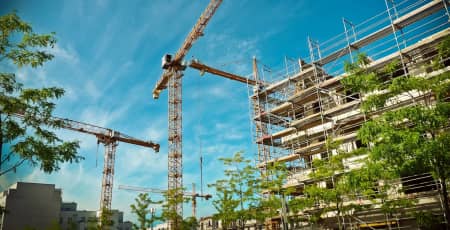Is Now the Time for Construction to Truly Embrace Sustainability?
This article was originally posted on Kevin Forestell’s LinkedIn. Read the original article here.
COVID-19 has kickstarted a lot of conversations about the environment and climate change. People have been forced to travel less and stay home more. Factories have temporarily turned off their machines. Boats are staying docked in harbors and cars stay parked in driveways. Among this “slowing down” of people, nature has sped right up.
For many, these displays of nature are the silver lining in this global pandemic: the good among all the uncertainty and fear of the past few months.
The Environment Is a Hot Topic During COVID
It’s a topic that everyone is looking at. David Suzuki, noted Canadian environmentalist and activist, has spoken up about the “breather” that COVID has given the environment. According to him, it’s an opportunity to change the way we live. The reduction of CO2 emissions highlights the impact that humans and our current lifestyles have on the world. BBC reported that this “carbon crash” is the largest drop in emissions that has ever been recorded in history. It’s a tangible example of our actual impact on the environment.
If CO2 levels don’t say enough, the presence of animals certainly does. In Brazil, the hatching of endangered hawksbill sea turtles went without interruption since, for the first time in decades, the turtles could hatch and then make their way to the ocean without human interaction. In Canada, researchers are optimistic that quieter oceans could lead to a more prosperous season for killer whales and other endangered sea creatures. In Yosemite Park, black bears are wandering around empty villages and roads while coyotes hunt mice without fear of being hit by cars or stopped by tourists.
The overwhelming message? Now is the time to introduce new legislation so that when parks open and tourism starts back up, it happens in conjunction with a wildlife protection revolution. We are seeing with our own eyes how important it is to protect the planet and just how much of an impact humans have.
Time To Embrace Green Construction
With sustainability and green construction growing as a trend in the past few years, this could be the time for construction to follow suit and really change what “normal” looks like in the industry.
Green construction includes everything from reducing emissions, using non-toxic materials and eliminating as much waste as possible during actual construction to the structure itself being fitted with energy-efficient and environmentally responsible fixtures. The idea of green building involves the entire lifecycle of a structure.
Benefits of Green Construction Practices
The benefits of green construction practices are well known. Reducing waste and using fuel-efficient machines are better for budgets. Using non-toxic materials is safer and healthier for workers and the communities around projects. The negative impact of concrete on the environment and the benefits of alternative building materials such as lumbar are not secrets. Making smart choices about recycled and local materials may take time but help support local economies and reduce the impact of the construction industry on landfills.
Ultimately, green construction makes healthier buildings, healthier environments and healthier communities. But the industry is large and complex. Construction itself is built like a quilt with different pieces and companies all with their own budgets, capabilities and standards. Regulations can change based on company size, building type, municipality, state or country.
Since construction has been one of the industries that has continued during COVID, it could be harder to implement a widespread change. There is no fresh start like parks or wildlife preservations that have the ability to implement change before opening the doors again. It makes change difficult. But not impossible and it’s certainly worth trying.
The Connection Between Construction Tech and Green Building
The green construction revolution will come – the environmental activism of the next generation will make sure of it. Technology will help to make this transition easier as many new advancements in IoT technology and smart cities help to push green building practice. But if there’s one thing we have learned from the COVID pandemic, it’s that waiting for the “right time” to change is pointless. There’s no time like now.
The world is prepared for adaptation. Every single one of us has accepted that a “new normal” will come out of this. The construction industry cannot and should not be left behind. As the industry that builds our world it becomes our responsibility to meet the green demands of our communities and take the initiative to make this world a healthier place.
Now is the time to fully embrace green building practices without hesitancy. Policy changes, updated regulations and equipment standards should be happening in conjunction with refreshed environmental laws. It’s time for construction to be included in the environmental conversation.

